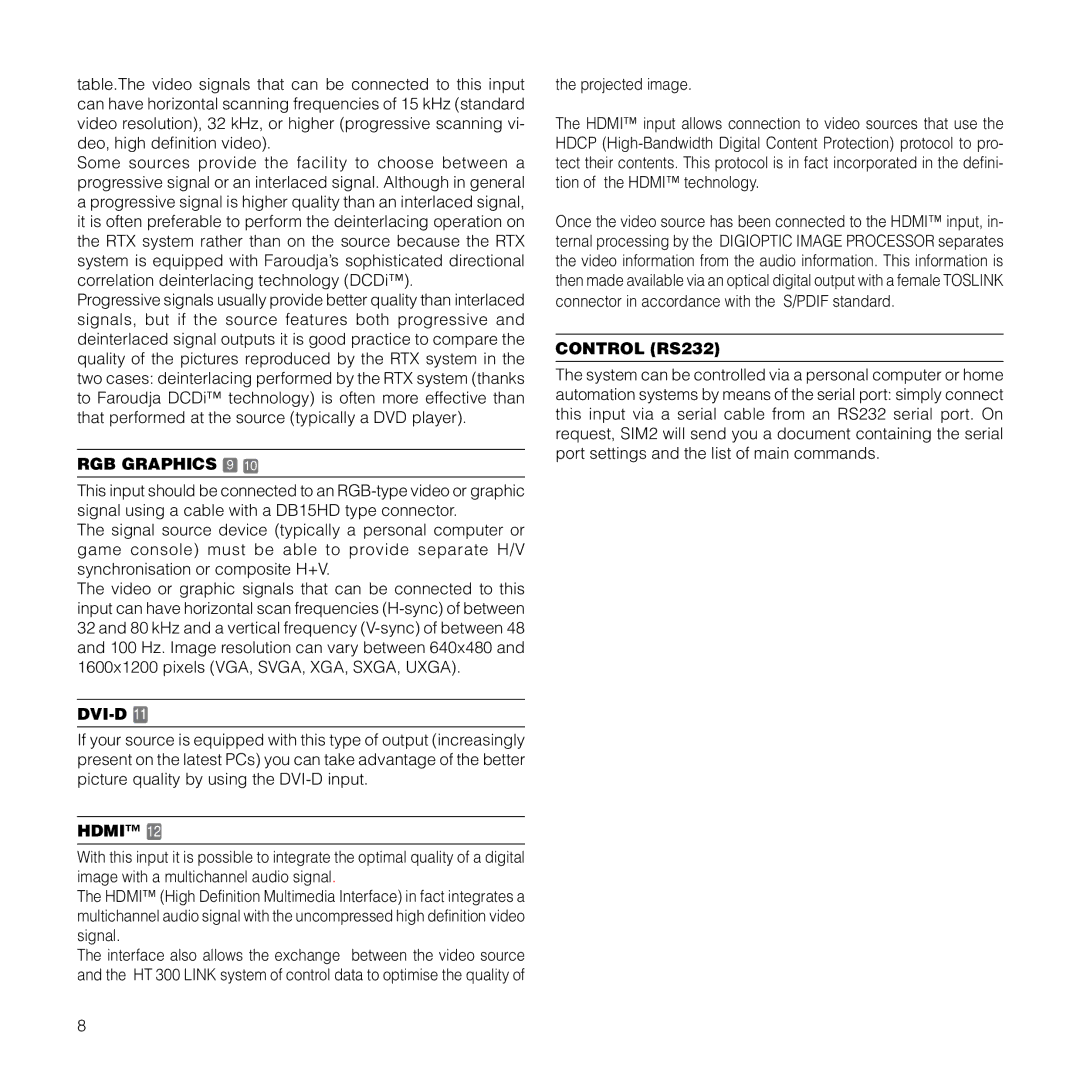
table.The video signals that can be connected to this input can have horizontal scanning frequencies of 15 kHz (standard video resolution), 32 kHz, or higher (progressive scanning vi- deo, high definition video).
Some sources provide the facility to choose between a progressive signal or an interlaced signal. Although in general a progressive signal is higher quality than an interlaced signal, it is often preferable to perform the deinterlacing operation on the RTX system rather than on the source because the RTX system is equipped with Faroudja’s sophisticated directional correlation deinterlacing technology (DCDi™).
Progressive signals usually provide better quality than interlaced signals, but if the source features both progressive and deinterlaced signal outputs it is good practice to compare the quality of the pictures reproduced by the RTX system in the two cases: deinterlacing performed by the RTX system (thanks to Faroudja DCDi™ technology) is often more effective than that performed at the source (typically a DVD player).
RGB GRAPHICS 9 10
This input should be connected to an
The signal source device (typically a personal computer or game console) must be able to provide separate H/V synchronisation or composite H+V.
The video or graphic signals that can be connected to this input can have horizontal scan frequencies
DVI-D 11
If your source is equipped with this type of output (increasingly present on the latest PCs) you can take advantage of the better picture quality by using the
HDMI™ 12
With this input it is possible to integrate the optimal quality of a digital image with a multichannel audio signal.
The HDMI™ (High Definition Multimedia Interface) in fact integrates a multichannel audio signal with the uncompressed high definition video signal.
The interface also allows the exchange between the video source and the HT 300 LINK system of control data to optimise the quality of
the projected image.
The HDMI™ input allows connection to video sources that use the HDCP
Once the video source has been connected to the HDMI™ input, in- ternal processing by the DIGIOPTIC IMAGE PROCESSOR separates the video information from the audio information. This information is then made available via an optical digital output with a female TOSLINK connector in accordance with the S/PDIF standard.
CONTROL (RS232)
The system can be controlled via a personal computer or home automation systems by means of the serial port: simply connect this input via a serial cable from an RS232 serial port. On request, SIM2 will send you a document containing the serial port settings and the list of main commands.
8
